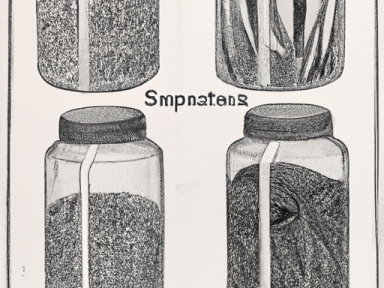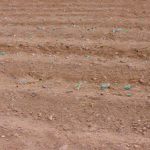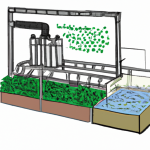Advanced Seed Saving: Ensuring Self-Sufficiency and Biodiversity
In the face of an impending crisis or disaster, it is essential to be prepared. As someone who values self-reliance, homesteading, and survival, you understand the importance of having the necessary skills and resources to sustain yourself and your loved ones. One crucial skill to master is seed saving.
The Importance of Seed Saving
Seed saving is the act of preserving seeds from plants, allowing you to grow your next crop without relying on outside sources. In uncertain times, access to quality seeds may be limited or nonexistent. By saving and preserving seeds, you ensure your self-sufficiency and reduce dependence on the system.
Furthermore, seed saving plays a pivotal role in promoting biodiversity. Commercial seed companies often offer a limited selection of plant varieties, focusing only on those with mass appeal. By saving and exchanging seeds, you contribute to the preservation of heirloom and rare plant varieties, fostering diversity in our food system.
Getting Started with Seed Saving
If you’re new to seed saving, it’s best to start with self-pollinating plants as they are the easiest to save seeds from. Examples include beans, peas, lettuce, tomatoes, and peppers. These plants typically have flowers that self-pollinate before the flower opens or are pollinated by the wind.
Once you have some experience with self-pollinating plants, you can venture into saving seeds from cross-pollinating plants such as cucumbers, melons, and squash. These plants require more attention to prevent cross-pollination with other similar varieties.
Step-by-Step Guide to Saving Seeds
- Choose the Best Plants: Select vigorous, healthy plants with desirable traits for seed saving.
- Allow for Maturity: Let the fruits or vegetables fully ripen on the plant. Seeds need to reach maturity for successful saving.
- Harvest and Extract Seeds: Separate the seeds from the fruit or vegetable using the appropriate method. This can include fermentation, drying, or washing.
- Ensure Proper Storage: Store the seeds in a cool, dark, and dry place. Use airtight containers or seed envelopes to prevent moisture or pest damage.
- Label and Organize: Label each seed container with the plant name, variety, and date of collection. Organize your seeds by type for easy access in the future.
Avoiding Cross-Pollination
To maintain the genetic purity of your seed varieties, it’s crucial to prevent cross-pollination between different plant varieties. This can be achieved through isolation techniques such as distance, barriers, and hand-pollination.
Distance: Plant different varieties of the same plant species at least 100 feet apart to minimize the risk of cross-pollination.
Barriers: Use physical barriers like row covers or breathable bags to prevent insects from reaching the flowers and cross-pollinating them.
Hand-Pollination: For plants with intricate flowers, you can hand-pollinate by transferring pollen from the male flower to the female flower using a small brush or cotton swab.
Building a Seed Bank
As a true advocate of self-reliance, consider establishing your seed bank. A seed bank is a collection of various seeds that you can rely on in times of crisis. It provides a safety net, ensuring that you have diverse plant varieties to cultivate even when external resources are scarce.
Save and store surplus seeds from each growing season, practicing proper seed saving techniques to maintain the quality and viability of the stored seeds.
Conclusion: Prepare for the Unknown
In an ever-changing world, it’s crucial to be prepared for the unknown. By mastering seed saving techniques, you ensure your self-sufficiency and contribute to the preservation of biodiversity. Don’t wait for a crisis to strike; start your seed saving journey today and secure your future!




GIPHY App Key not set. Please check settings